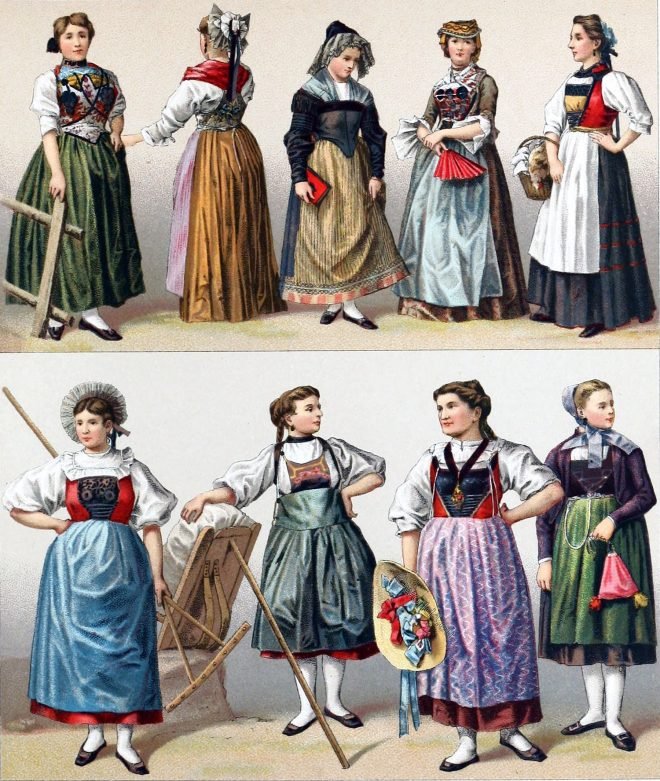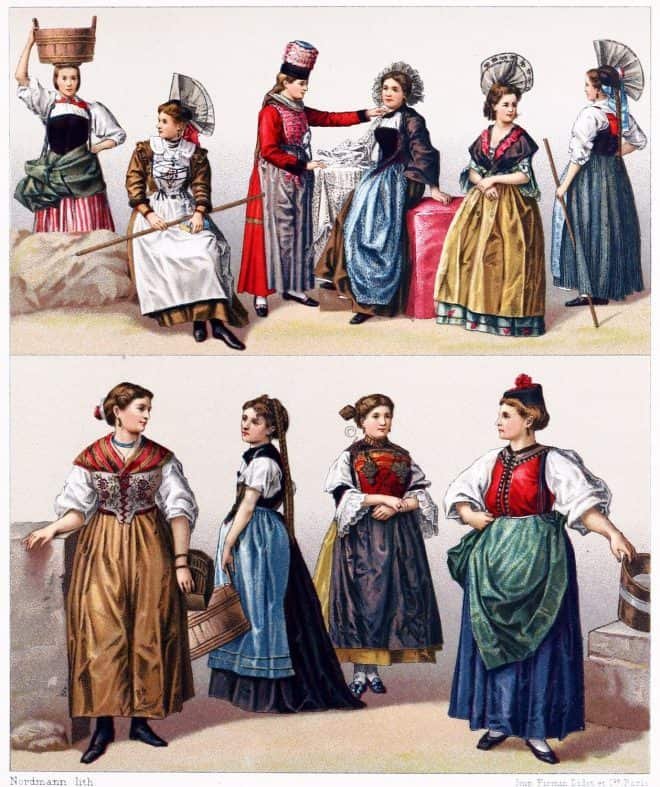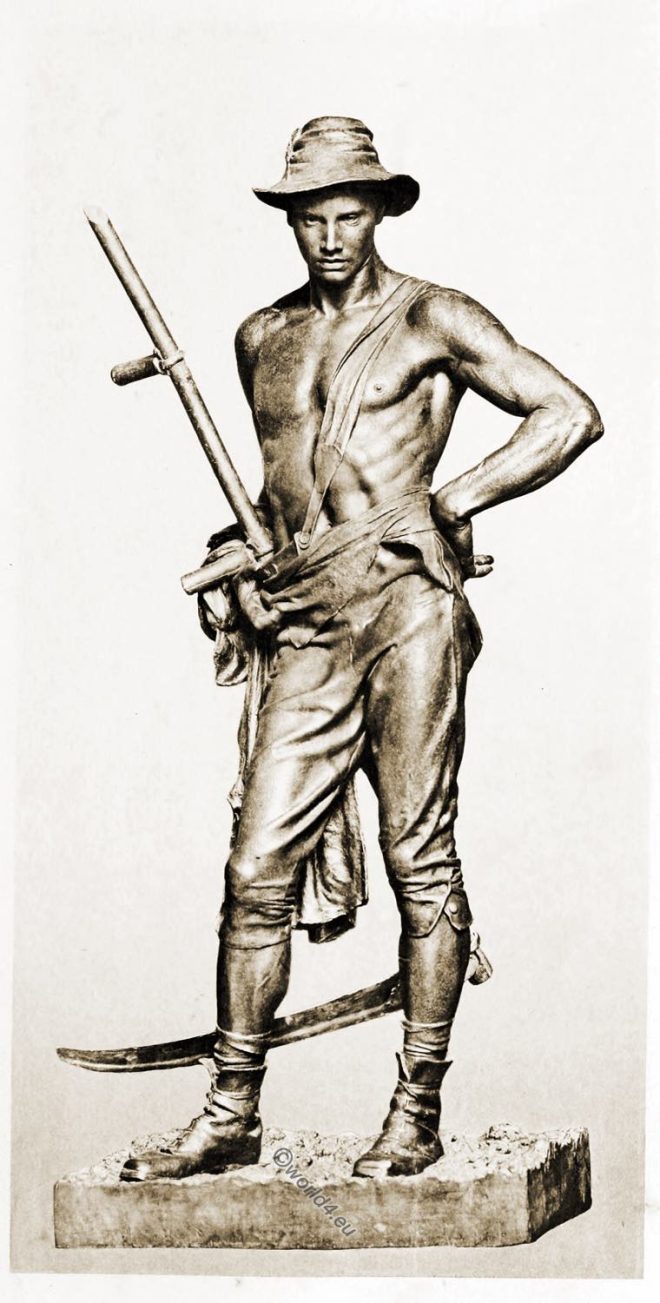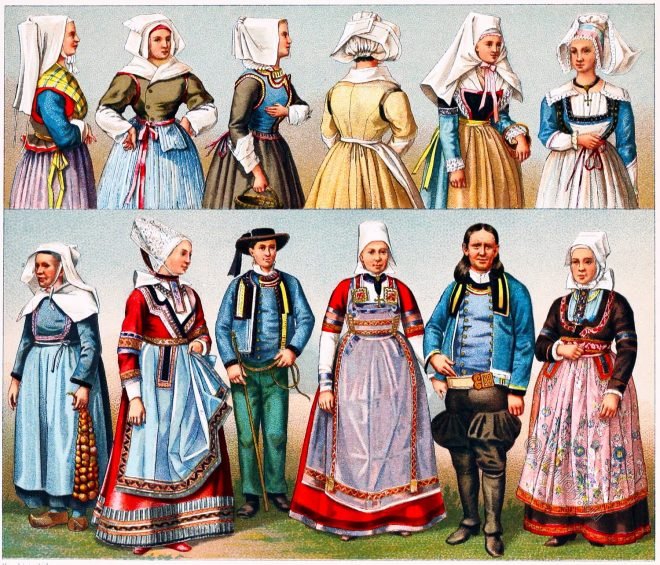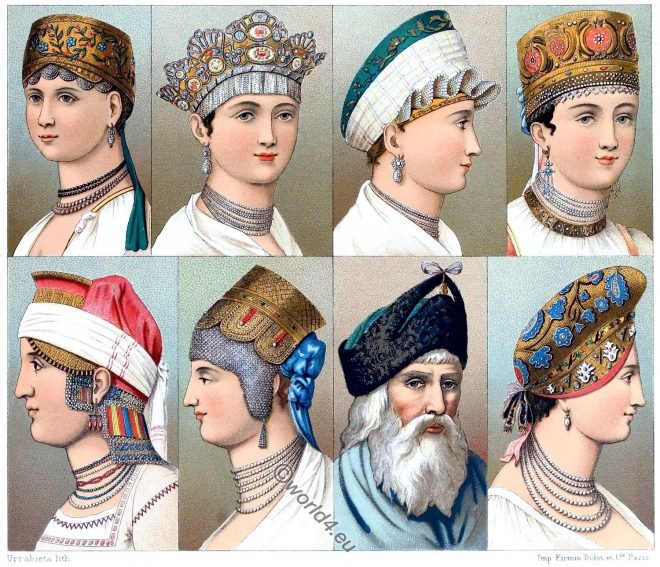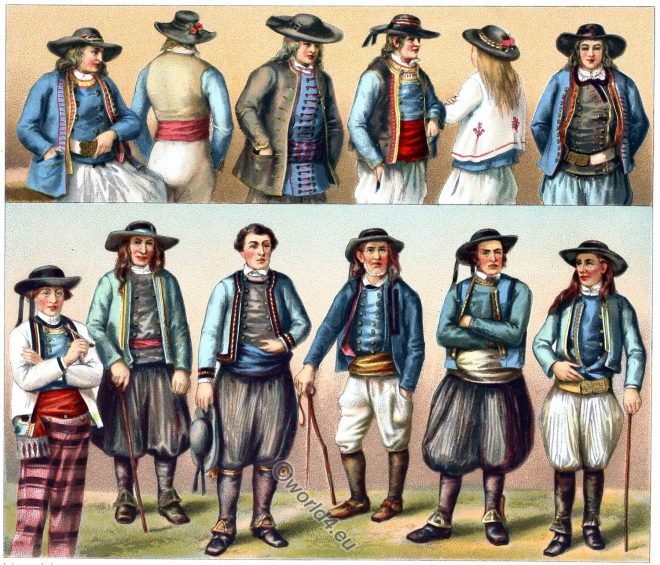Women’s costumes from the Swiss cantons, Unterwalden, Sankt Gallen, Bern, Valais, Zurich, Zug, Lucerne and Basel.
Category: 1888
Switzerland. Female costumes from Berne, Appenzell, Fribourg and others.
Traditional female Swiss costume fashion from the cantons of Bern, Appenzell, Fribourg, Uri, Lucerne, Schwyz and Unterwalden.
Ryggastuga. The Swedish farmhouse. Interior and household goods.
The Swedish farmhouse, the so-called Ryggastuga, is a small, simple dwelling house with a grass roof. Interior and household goods.
The Mower by Sir William Hamo Thornycroft. Italian model Orazio Cervi.
The Mower (1888) by Sir W. H. Thornycroft is apparently the first portrayal in British sculpture of a labourer in his working clothes.
Département Finistère. Peasant and bourgeois costumes of Brittany.
French national costumes of Brittany. Département Finistère in the 19th century. Peasant and bourgeois costumes.
Scandinavian costumes from Sweden, Iceland and Lapland.
Young girl from Reykjavik, Island in festive dress. Farmer and girl in Sunday state from Dalarna County, Sweden. Young woman in summer costume from the Swedish province of Bleking. Family in Sunday state from the Parish of Leksand, Dalarna, Sweden. Winter coat of sheepskin from the Swedish Sudermanland.
The Kokoshnik. Traditional Russian hairstyles and headgear.
Russia. Popular hairstyles. The traditional costume of Russian women especially the Kokoshnik (Russian: Коко́шник) has survived all innovations of fashion.
Historical Folk Costumes of the Balearic and Pitiusan Islands.
The costumes depicted here come partly from the Balearic Islands (Mallorca, Minorca, Cabrera), partly from the Pitiusas, which the most important is Ibiza.
French costumes from the department Finistère, Bretagne.
Traditional costumes from Châteauneuf-du-Faou, Carantec, Douarnenez, Quimper, Plonévez-Porzay, Scaër, Plogonnec and Langolen.
Historic costumes from Hardanger, Norway 1888.
Historic costumes from Hardanger, Norway 1888.

